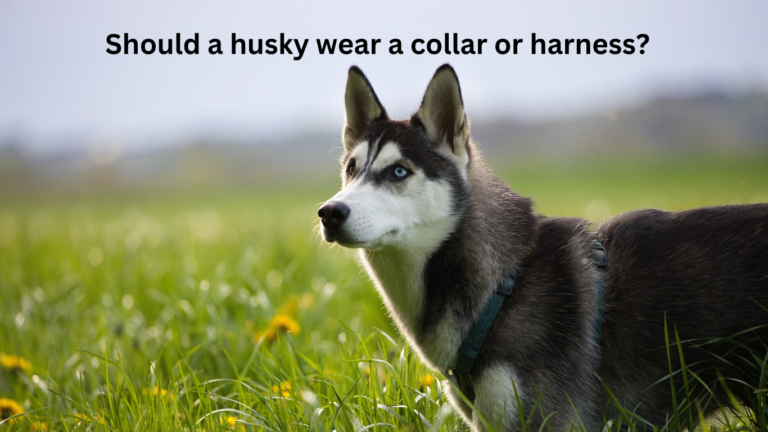How do you use an e-collar for hunting dogs?
How do you use an e-collar for hunting dogs?
Before investing in an e-collar for your hunting dog, it’s essential to understand how to use this electronic training tool effectively. “How do you use an e-collar for hunting dogs?” In this article, we’ll delve into the practical aspects of using an e-collar for hunting dogs, providing straightforward guidance to ensure a positive and humane training experience.
From selecting the right e-collar and fitting it correctly to introducing the device to your dog positively, we’ll cover the key steps in using an e-collar responsibly. Whether you’re a seasoned hunter or a novice dog owner, this guide aims to simplify the process, emphasizing the importance of consistency, positive reinforcement, and the well-being of your four-legged hunting companion.
Training Hunting Dog With an E-Collar
Introducing Your Hunting Dog To An E-Collar
The initial step in e-collar training is introducing your hunting dog to the device in a manner that fosters familiarity without inducing stress. This is crucial for building a positive association with the collar.
Early Introduction:
- I begin the process by allowing my dogs to wear the e-collar as early as 12 weeks old, focusing solely on acclimating them to the sensation without utilizing any form of stimulation. The primary objective during this phase is desensitization, ensuring that the presence of the e-collar becomes a normal and non-threatening part of their routine.
Choke Collar Integration:
- Between 14 and 17 weeks, I incorporate the use of a choke collar for negative reinforcement while the e-collar is worn by the dog. It’s essential to refrain from applying any e-collar stimulation during this stage.
Gradual Vibration Introduction:
- Once the dog comprehends negative reinforcement with the choke collar, I gradually introduce the e-collar’s vibration mode. This serves as a transitional step, preparing the dog for the eventual use of stronger stimulation levels.
Stimulation Introduction:
- Building upon the progress achieved with the choke collar and vibration mode, I initiate “nicking” the dog with e-collar stimulation while employing the choke lead. The gradual progression through stimulation levels is a crucial aspect, allowing me to determine the level that effectively captures the dog’s attention without causing distress.
Key Considerations and Things to Avoid
Given the sensitive nature of e-collar training, it’s imperative to be cognizant of certain considerations and potential pitfalls.
Avoid Immediate Stimulation:
- As reiterated, it’s advisable to refrain from applying stimulation immediately after introducing the e-collar. This precautionary measure aims to prevent any negative associations between the collar and adverse experiences.
Gradual Approach to Training:
- Adopting a measured and gradual approach to e-collar training is paramount. While progress can be expedited as the dog becomes accustomed to the collar, attempting to hasten the process too early may lead to setbacks that are challenging to rectify.
Ways to Use An E-Collar For Training
Beyond the introductory phase, understanding the practical applications of an e-collar during training sessions is crucial. Here are some fundamental ways I incorporate an e-collar into my training regimen:
Recall Command:
- The recall command, arguably one of the most critical in hunting scenarios, is reinforced using the e-collar. In situations where a shot is missed, the recall command ensures immediate return, preventing the dog from flushing the bird again and allowing for a second attempt at a closer range.
Heel Command:
- While the heel command can be effectively implemented without an e-collar, incorporating this tool enhances training. The e-collar aids in reinforcing the heel command, ensuring disciplined behavior during hunts.
Whoa Command:
- The “whoa” command, vital for maintaining a steady point, is trained using the e-collar in conjunction with half-hitch techniques. This combination proves effective in cultivating bird dogs that exhibit unwavering steadiness in any hunting situation.
A Hands-On Tutorial on E-Collar Mastery for Hunting Dogs
Unlock the potential of seamless training and heightened control in the field! In this video, here is the essential guide on ‘How to Use an E-collar for Hunting Dogs.’ Learn the ropes of utilizing electronic collars to enhance communication, reinforce commands, and ensure a successful and harmonious hunting experience with your loyal four-legged companion. Let’s embark on this journey together, discovering the art of responsible and effective e-collar usage for a stronger bond and better performance in the great outdoors. Watch the video below and explore the key insights into mastering this invaluable tool for your hunting dog’s training journey
How Does An E-Collar Help While Hunting?
Understanding how the lessons learned in training translate to real-world hunting scenarios is crucial for harnessing the full potential of an e-collar.
Recall Command After Missing A Bird:
- In the field, a missed shot could lead to the dog continuing the pursuit. The recall command, enforced with the e-collar, brings the dogs back immediately, allowing for an undisturbed landing of the bird and a second attempt at a closer range.
Utilizing Heel Command When Leaving A Bird:
- In situations where both dogs are on point simultaneously, the heel command, with additional e-collar stimulation for reinforcement, guides the dogs away from the point to a different location, setting the stage for a more strategic hunting position.
Stopping Creep/Backing with the Whoa Command:
- Particularly relevant for younger dogs, the whoa command, supported by a belly collar and low-level e-collar stimulation, prevents creeping towards a bird. This ensures a consistent point and contributes to the development of a reliable bird dog.
Conclusion
In conclusion, my experience with utilizing a high-quality e-collar, especially from top brands, has been transformative in both training my dogs and ensuring safe and effective hunts. Considering the question, “How do you use an e-collar for hunting dogs?” It is essential to recognize that while e-collars may not be suitable for every hunter, a careful evaluation of the pros and cons, taking into account the unique needs and dynamics of your hunting endeavors, is strongly advisable. The judicious application of an e-collar, in alignment with the insights shared on how to use an e-collar for hunting dogs, can significantly contribute to the success and safety of your hunting experiences.
FAQ
Are hunting dogs friendly?
Yes, many hunting dogs are known for their friendly and sociable nature. Breeds like Labradors, Golden Retrievers, and Beagles, commonly used in hunting, tend to be affectionate and enjoy companionship. Proper training and socialization can enhance their friendly disposition, making them great family pets as well.
What not to do with a hunting dog?
Avoid harsh punishments, as hunting dogs respond better to positive reinforcement. Never neglect their exercise needs; hunting breeds thrive on physical activity. Refrain from leaving them alone for extended periods, as they may become anxious. Also, do not skip regular veterinary check-ups, ensuring their health is consistently monitored.
What is the best training collar for hunting dogs?
The best training collar for hunting dogs depends on individual preferences and training goals. Many hunters prefer remote training collars with adjustable settings for consistent control. Brands like Garmin, SportDOG, and Dogtra offer reliable options. It’s crucial to choose a collar that suits your dog’s size, temperament, and the specific commands you want to reinforce.
How do I make my hunting dog happy?
Keep your hunting dog happy by providing ample exercise, mental stimulation, and quality time together. Engage in activities like fetching, hiking, or puzzle toys to cater to their active nature. Regular training sessions not only reinforce discipline but also create a sense of accomplishment for your dog. Lastly, ensure a balanced diet and regular veterinary care to maintain their overall well-being.
Are hunting dogs aggressive?
Hunting dogs, when properly trained and socialized, are not inherently aggressive. However, like any breed, individual temperament varies. Early socialization, positive reinforcement, and consistent training help prevent aggression. Responsible ownership, understanding their specific needs, and addressing any behavioral issues promptly contribute to a well-mannered hunting dog.
How do you calm a hunting dog?
To calm a hunting dog, start by removing potential stressors. Create a designated, quiet space for relaxation. Engage in calming activities like gentle petting or offering a favorite toy. Maintain a consistent routine for feeding, exercise, and rest. Additionally, training them in basic commands like “sit” or “stay” can provide mental stimulation and promote a sense of security.





